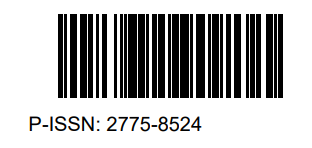STRENGTHS AND WEAKNESSES OF USING AUTHENTIC MATERIALS IN TEACHING LISTENING COMPREHENSION
DOI:
https://doi.org/10.33477/lingue.v1i2.1186Abstract
Abstract Listening is not a passive skill. It is an active process since it needs the interpretation of sounds into meaning. It is important for teachers to help their students to increase the students’ listening comprehension. This paper discusses the teaching listening comprehension using authentic materials. Authentic materials are the materials that have been produced by native speakers in the form of written or spoken language. There are strengths and weaknesses in applying these materials. Some of the strengths are more interesting, genuine, and motivating than non-authentic materials. On the other hand, the authentic materials are too difficult for lower level students so the teacher needs to spend more hours to apply them. Finally, in teaching listening comprehension the teacher needs to select the appropriate materials to meet the students’ level and knowledge background and most of all it must be suitable with the syllabus of teaching objectives. Keywords: Authentic Materials, Strengths, Weaknesses, Listening Comprehension Abstract Mendengarkan bukanlah keterampilan pasif. Mendengarkan merupakan proses aktif karena membutuhkan interpretasi suara menjadi makna. Penting bagi guru untuk membantu para siswa dalam meningkatkan kemampuan mendengarkan mereka. Tulisan ini membahas penggunaan materi otentik dalam pengajaran kemampuan mendengarkan siswa. Materi otentik adalah materi yang telah diproduksi oleh penutur asli dalam bentuk bahasa tertulis maupun lisan. Ada kelebihan dan kekurangan dalam mengaplikasikan materi ini. Beberapa kelebihan di antaranya materi otentik ini lebih menarik, asli, dan memotivasi daripada materi yang tidak otentik. Namun di sisi lain, materi otentik dianggap terlalu sulit bagi siswa dengan tingkat pemahaman yang rendah sehingga guru perlu menghabiskan lebih banyak waktu untuk menerapkannya. Pada akhirnya, dalam mengajarkan kemampuan mendengarkan bagi para siswa, guru perlu menyeleksi materi yang sesuai untuk memenuhi tingkat dan latar belakang pengetahuan siswa serta yang paling penting harus sesuai dengan silabus dan tujuan pengajaran. Kata kunci: Materi Otentik, Kelebihan, Kekurangan, Pemahaman MendengarkanReferences
Anderson, A. and Tony Lynch. 1988. Listening. London: Oxford University Press.
Brown, G. 1992. Listening to Spoken English. London: Longman Press.
Celce-Murcia, Marianne and Elite Olshtain. 2000. Discourse and Context in Language Teaching: A Guide for Language Teachers. London: Cambridge University Press.
Chamot, Anna Uhl. 1995. Learning Strategies and Listening Comprehension: A Guide for the Teaching of Second Language Listening. New York: Dominie Press.
Dumitrescu, Valeriu. 2000. Authentic Materials: Selection and Implementation in Exercise Language Teaching. English Teaching Forum. 38: 115-118.
Feyten, C.M. 1991. The Power of Listening Ability: An Overlooked Dimension in Language Acquisition. The Modern Language Journal.
Haines, Simon. 1995. For and Against Authentic Materials.The Modern English Teaching. 45: 134-141.
Krashen, Stephen D. 1983. The Natural Approach: Language Acquisition in the Classroom. New York: The Alemany Press.
Larimer, Ruth E and Leigh Schleicher. 1999. New Ways in Using Authentic Materials in the Classroom. Illinois: TESOL
Larsen-Freeman, Diana. 1998. Getting the Whole Picture: Language Teaching Methodologies. Vermont: Oxford University Press.
Morrow, Keith and Keith Johnson. 1981. Communicative in the Classroom. London: Longman Group Ltd
Nunan, David and L. Miller. 1995. New Ways in Teaching Listening. Illinois: TESOL
Peacock, Matthew. 1997. The Effect of Authentic Materials on the Motivation of EFL Learners. EFL Journal. 17: 22-25
Rost, Michael. 1991. Listening in Action: Activities for Developing Listening in Language Teaching. New York: Prentice Hall.
Underwood, Mary. 1996. Teaching Listening. New York: Longman Inc.
Ur, Penny. 1996. Teaching Listening Comprehension. London: Cambridge University Press
Valette, Rebecca. M. 1977. Modern Language Testing. New York: Harcourt Brace Jovanovich Publishers.
Wong, Viola, Peony Kow and Nancy Choi, 1995.The Use of Authentic Materials at Tertiary Level. ELT Journal. 25: 89-93
Downloads
Published
How to Cite
Issue
Section
License
If accepted for publication, the copyright of the article belongs to the author. Copyright includes the exclusive right to reproduce or transmit manuscripts in any form and media: reprint, produce photographs, microfilm, or translated versions of the manuscript. Increasing parts of this journal, storage and transmission of databases of any form or media, such as electronic copies, electrostatic and mechanical copies, photocopies, recordings, magnetic media and so on are permitted without permission. LINGUE: Jurnal Bahasa, Budaya dan Sastra, allow readers to read, download, copy, distribute, print, search, or link the fulltext of its articles and allow readers to use them for any other lawful purpose. However, it can not be used for commercial purposes
Jika diterima untuk publikasi, hak cipta artikel adalah milik penulis. Hak Cipta mencakup hak eksklusif untuk mereproduksi atau mengirimkan manuskrip dalam bentuk dan media apa pun: mencetak ulang, menghasilkan foto, mikrofilm, atau versi terjemahan dari manuskrip tersebut. Memperbanyak bagian jurnal ini, penyimpanan dan transmisi database dalam bentuk atau media apa pun, seperti salinan elektronik, salinan elektrostatis dan mekanis, fotokopi, rekaman, media magnetis, dan sebagainya diizinkan tanpa izin. LINGUE: Jurnal Bahasa,Budaya dan Sastra, memungkinkan pembaca untuk membaca, mengunduh, menyalin, mendistribusikan, mencetak, mencari, atau menautkan teks lengkap artikelnya dan memungkinkan pembaca untuk menggunakannya untuk tujuan yang sah lainnya. Namun, tidak dapat digunakan untuk tujuan komersial

LINGUE : Jurnal Bahasa, Budaya, dan Sastra Ciptaan disebarluaskan di bawah Lisensi Creative Commons Atribusi-TanpaTurunan 4.0 Internasional.







